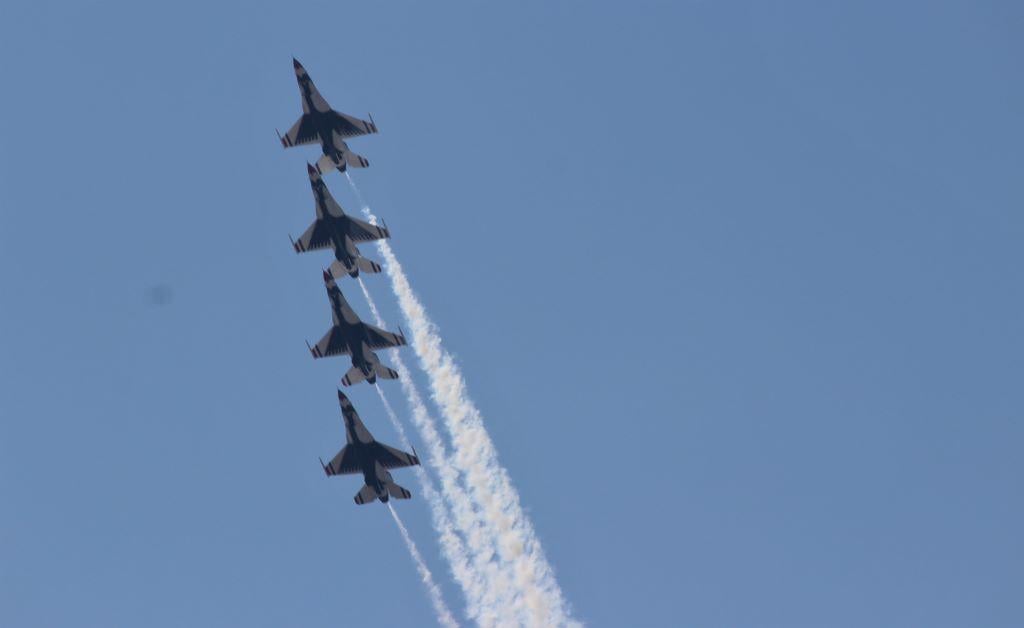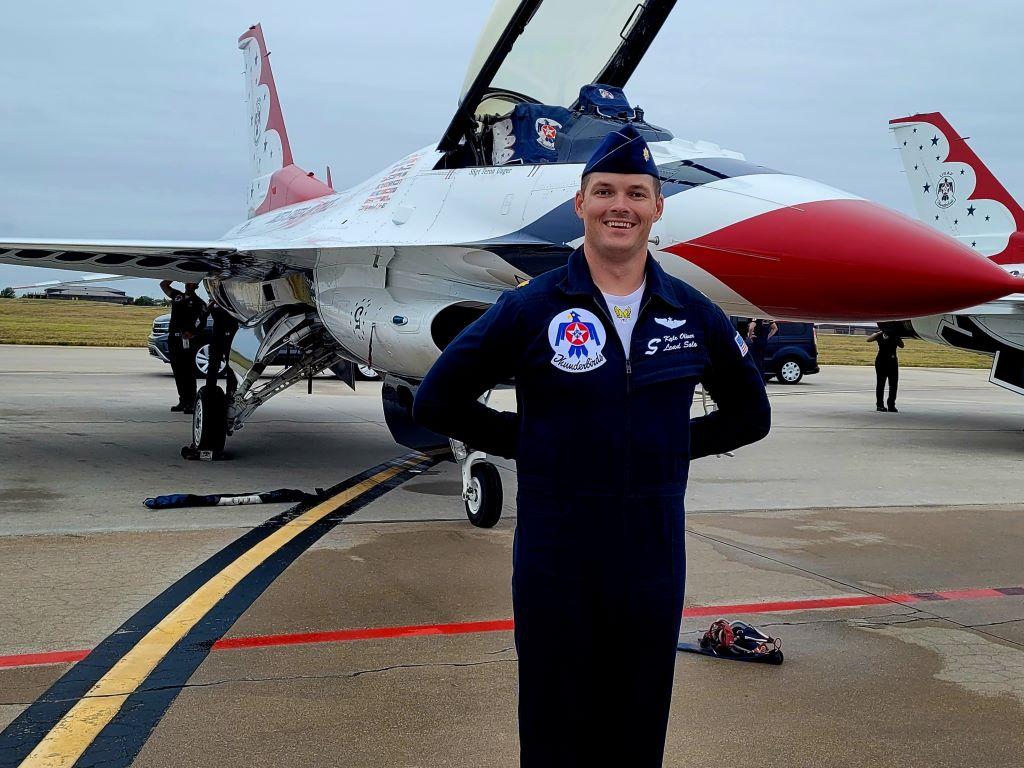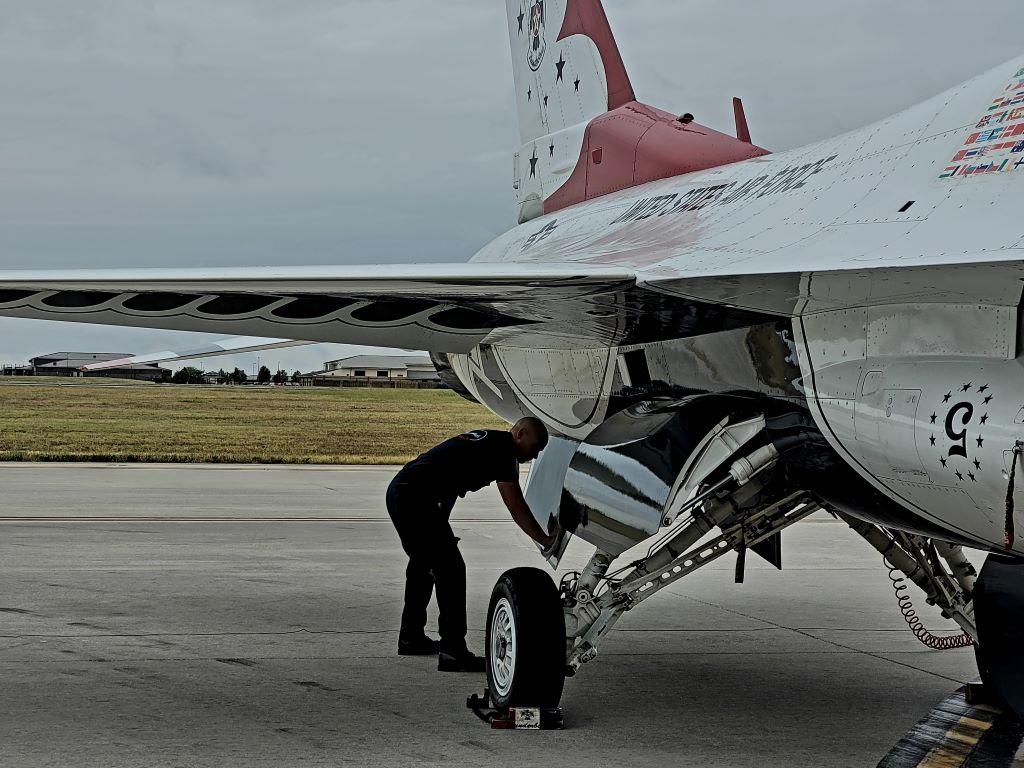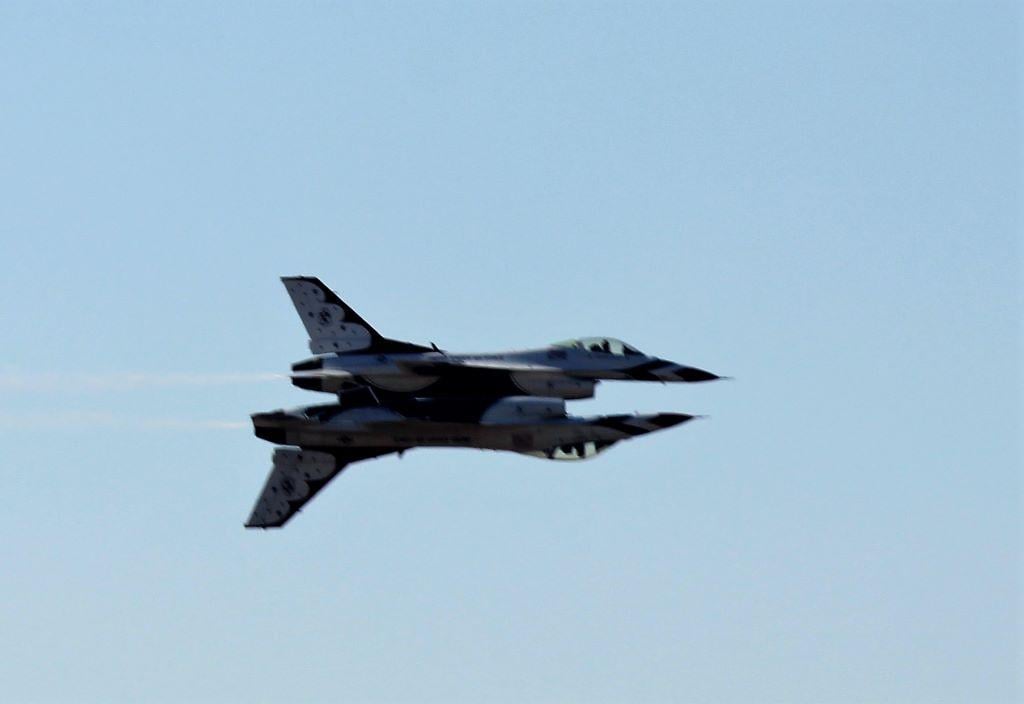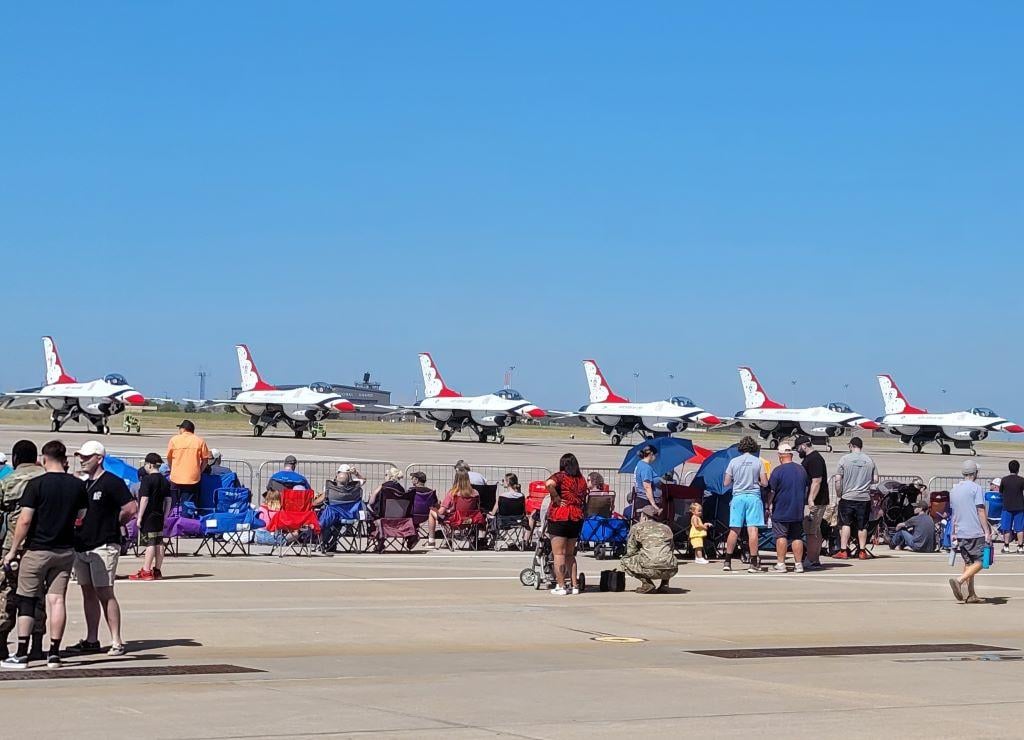The U.S. Air Force Thunderbirds air demonstration squadron was the headline performance in McConnell Air Force Base’s Frontiers in Flight Open House & Airshow in Wichita Sept. 24-25.
As a team flying Lockheed Martin F-16 Fighting Falcons, members perform high aerial maneuvers, demonstrating high-performance aircraft around the world. The demonstration is a mix of formation flying and solo routines.

